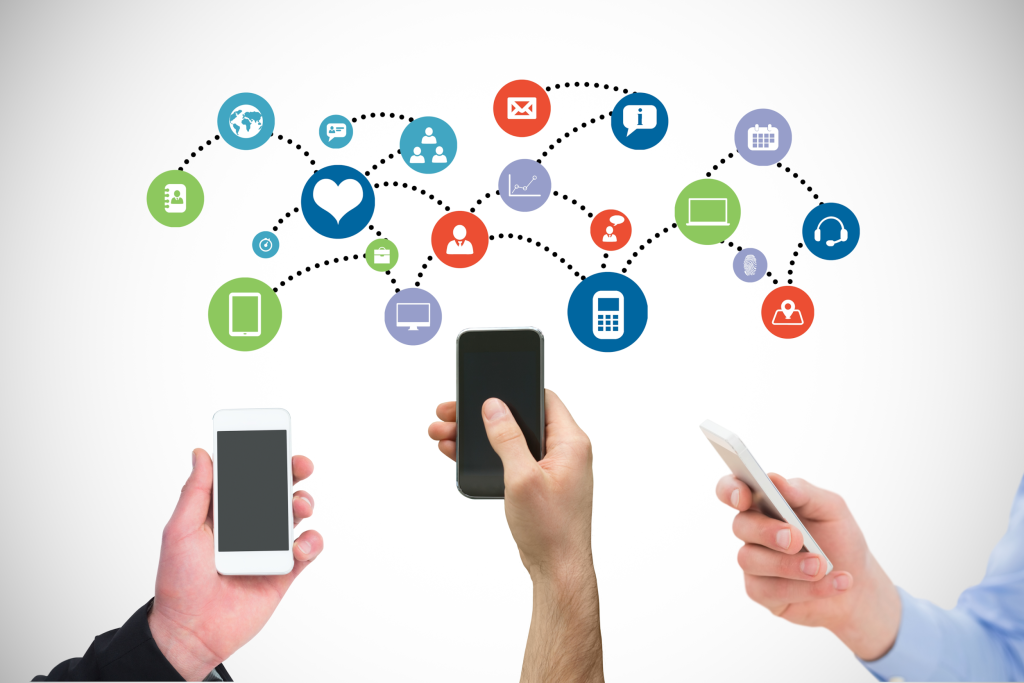Leverage QR codes for Retail Promotions and Discounts

Key Takeaways
QR code technology can offer a seamless access to discounts and offers . The technology helps in bridging the divide between the physical experience and online convenience .
Personalised offers and discounts can be communicated and delivered to the customers within 2 seconds of a QR code scan within the retail store .Such personalised offerings have a much higher engagement rate and lead to higher sales
QR code technology can offer a truly omni-channel and gamified experience within the store premises which ensures a much more convenient and desirable customer experience
Tracking and Analysing every customer interaction via QR codes lead to much more optimized marketing campaigns which in turn help the customers in their buying journey and lead to higher sales
Introduction
With the advent of immersive technologies, the retail shopping experiences have the potential to become more engaging. These digital codes or better known as Quick Response (QR) codes have now become a vital part of most retail marketing strategies.
Dynamic QR codes can simplify access to personalized offerings, giving direct visibility of discount offers and have also streamlined the data collection and tracking processes. Choosing the right QR code generator is crucial for creating effective retail marketing strategies, as it enables businesses to create coupon linked QR codes, track and analyze QR code campaigns, and gain insights into customer behavior, ensuring the QR codes align with the business’s promotional goals.

Use QR Code Coupons to Improve Retail Promotions
QR codes combine digital omnipresence with physical shopping experiences, creating a convenient yet powerful customer experience. To maximize this, retailers can place QR codes in strategic locations throughout the store, such as on merchandise tags for quick access to inventory information, in different departments to highlight promotions, or at the cash register for last-minute deals. This strategy not only enhances customer engagement but also ensures convenience, especially when staff availability is limited. Here are some ways on how QR codes can be used for Retail Promotions and Discounts.
1. Seamless Access to Deals and Offers
The QR codes are generally placed on the product price tags, shelves, entry or exit touch points, digital screens or some marketing material like banner, poster placed strategically within the store premises.
These QR codes can be easily scanned by the customers to discover the personalized or general promotions and discounts. Such an immersive and highly engaging customer experience makes the buying journey more enjoyable and boosts the chances of eventual customer buying which leads to higher sales. QR code scanning adds to this convenience, allowing customers to quickly access deals and offers with minimal effort, enhancing their shopping experience.
Example:
Assume you are in a store like Zara, and each product is tagged with a QR code. A customer named Jack is interested in a shirt from the new collection,so Jack scans the QR code marked on the shirt’s product tag , and discovers that he is eligible for a 20% discount on the product because of his past purchases with Zara . Jack is thrilled with the instant discount offering he uncovered via the QR code and immediately redeems the coupon at checkout.
Similarly, during peak retail shopping periods such as Christmas or Black Friday, Target strategically places QR codes on various products. Target’s customers effortlessly access the special offers and deals, which has a direct impact on customer engagement and sales.

Advantages of using QR codes to access Deals and Offers :
Instant Gratification
Shoppers enjoy the thrill of being able to unravel the discount codes on their favorite products , which increases their propensity to purchase and being retained for future buying also.
Friction less Journey
The long process of finding the most appropriate discount offerings for the favorite product is now replaced by a 2 second camera scan of the QR code . This is truly a magical and liberating experience for the customers
2. Personalisation offerings for the customer
The beauty about dynamic QR codes is that they can be linked with various types of data flows. For instance, when QR codes are integrated with customer loyalty data, retailers can offer much more relevant discounts and provide better product recommendations. This adaptability is further enhanced by the advantage of using dynamic QR codes for personalizing offers, as they can be updated with new information relevant to the customer’s preferences, ensuring that promotions remain timely and targeted.
This type of personalization is generally based on the customer’s browsing history, browsing behavior, price preferences, or category affinity. Such personalized offerings, powered by the flexibility of dynamic QR codes, can make the promotions and discounts more relevant and useful for the customers in their buying journey.

Example
When a customer named Linda enters a grocery store like FreshMart , she scans a QR code placed at the entry door of the store . This QR code lands Linda directly on the customer loyalty page where she can look at her past purchases and see the available balance of the reward points .
Based on Linda’s past purchases , FreshMart can suggest some new products in her favorite category like gluten free food items . FreshMart can also give some discount offerings on new products that have been launched in the Gluten free category .
If Linda has not purchased with Freshmart for a long time and is on the verge of churning , Freshmart might want to offer a higher discount percentage to Linda to ensure she stays a loyal customer of FreshMart .
While this is hypothetical example for a customer named Linda , such methods of personalized offerings significantly improves customer satisfaction and has boosted Freshmart’s conversion around 30%
Advantages of using Dynamic QR codes for personalization
Highly Engaging Customer Experience:
Personalized offers have a direct impact on customer engagement and overall conversion eventually . Not only is the experience more relevant , the customer feels empowered and valued since the customer is able to maintain a 1:1 equation with the retail company
Better Sales
Personalized offers lead to higher conversion rates which has a direct impact on increasing sales which is the ultimate goal of any major retail player.
3. Optimized Omnichannel Experience
An optimized omnichannel (O2) experience is just like oxygen for a physical retail player. Every retail experience is trying to bridge the gap between the offline and the online worlds. Incorporating QR codes into omnichannel marketing strategies is crucial for providing a seamless shopping experience across various channels. The QR codes are a direct gateway to bridge this gap.

Example
During the pandemic , many physical stores had to adapt and offer omnichannel experiences to the customers . One of such examples is BestBuy which allows its customers to scan the QR code on its product , check information about the product and then ultimately add it to cart . The customers can then decide at a later time if they want to complete the transaction in store or order purely online .
Such customer experiences have now become a mainstay in offering convenient and flexible buying options for the customer. This is relevant for both high involvement products like electronics and low involvement products like basic groceries like bread.
Advantages of using QR codes for omnichannel experience
Flexibility
Such offerings give flexibility to the customers in their buying journey
Pure integrated experiences
Allows for effective tracking of every customer interaction and preferences irrespective of the channels from which the customer is interacting
4. Gamification of Shopping Experiences
Gamification initiatives of retail experience through QR codes can lead to high customer engagement and can eventually lead to an elevated shopping experience. Incorporating QR code campaigns can gamify the shopping experience further, engaging customers through interactive elements like scavenger hunts, which not only entertain but also encourage more frequent visits and purchases. Scavenger hunts and Reward point systems are starting to become common in today’s world and such offerings can lead to a higher frequency of customer visits and subsequent conversion.

Example
The Scavenger Hunt promotion of Ikea invites the customers to discover the QR codes hidden at various places inside the store . Scanning each of those QR codes provides coupons or digital tokens which can be used by the customer .
Such gamification offerings lead to a better customer engagement rate and an enhanced shopping experience . The overall goal of such a gamified experience is to have a higher basket size and better customer experience.
Advantages
Interactive Shopping Experience
Gamified initiatives provide a fun and engaging way of customer interaction which leads to good word of mouth about the company
Higher footfall in stores
Better word of mouth because of such gamified offerings lead to a higher footfall and sales conversion both in the offline and online world.
5. Simplified Data Collection
The best part of a QR code implementation is that it gives a mechanism to track the physical customer interactions in an objective manner. Most QR code offerings provide vital pieces of information like time and place of scan and the subsequent customer activity can also be tracked.
In this way, the retail players can form a 360 degree view of the customer which can ultimately be utilized to give a better customer experience. Retail QR codes simplify data collection and provide insights into customer behavior, enhancing the shopping experience.

Example
GlamStore leverages QR code technology in their stores by collecting data about customers’ interaction with different products . QR codes tracking and analytics also show which promotions get the most interest. Such insights help retail players like GlamStore to enhance product placements on the shelves in the offline world .
The second benefit of such insights is that they can improve the promotional strategies effectively. Post implementation of QR code technology , GlamStore saw an improvement of 25% in their marketing campaign’s return on investment and a 15% jump in the redemption percentage.
Advantages of using QR codes for data collection
Analytics and Tracking in Real Time
QR code platforms can give a direct insight on the performance of the ongoing marketing campaigns and customer interactions
Pointed and Targeted Marketing
QR Code integration can make the interactions more relevant and targetted , which have a higher engagement and satisfaction among the customers
Best Practices of Implementing QR Codes for Retail Promotions
To enhance performance of retail promotions , some of the best practices are listed below:
Placement
QR codes should be generally placed at the entry , exit , checkout kiosks for higher visibility and adoption
Printing
The QR codes should be printed in high quality formats to ensure good visibility and good scannability via smartphones
Content Refresh
The offerings and discounts should be revised at appropriate intervals to keep an element of excitement and surprise among the customers
Staff Education
Staff within the retail store premises should be well trained to address and answer any customer queries related to QR codes placed within the store premises .
Conclusion
QR code technology can drastically boost the efficiency and efficacy of retail promotions through seamless access to discounts, and providing a personalised shopping experience. Unlike static QR codes, dynamic QR codes offer the flexibility to modify and update information even after distribution, making them a superior choice for retailers aiming to stay ahead in the competitive market.
Start your 14 day trial today !!